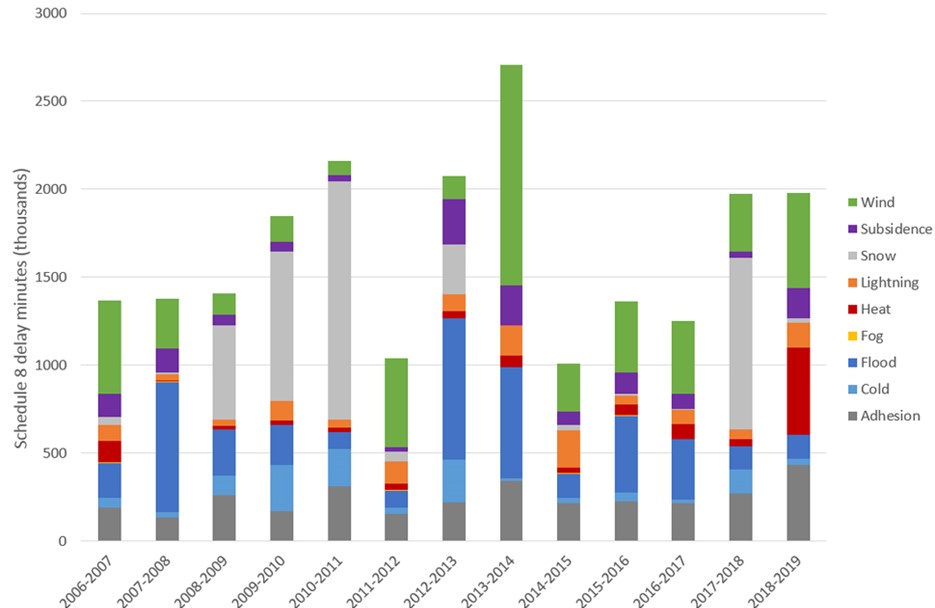
Rachel Fisher, Industrial Liaison Fellow at BCRRE for Remote Sensing and Smart Systems, outlines some of the effects of weather on railways – including covering some of her own PhD study.
As a global leader in rail research, BCRRE is well-placed to contribute to the global effort to tackle climate change by reducing carbon emissions, particularly in the transport sector, and readers of this blog will undoubtedly be aware that BCRRE has recently announced its Centre of Excellence for Decarbonisation. However, carbon mitigation is only one part of the solution to climate change, where the other part relates to climate change adaptation. Attendees of this week’s Destination Decarbonisation Research day will have heard about Dr Andrew Quinn’s research relating to the effects of climate change on railways and how they can be adapted to become resilient infrastructure networks.
The research undertaken not only looks into future scenarios but also gains understanding from historic events. On average, weather events are the cause of 12% of train delays and cost Network Rail between £50m and £100m each year. In order to tackle this issue, Network Rail has developed a Weather Resilience and Climate Change Adaptation Strategy to direct its activities, not only to become more resilient to the effects of weather, but also to prepare and adapt to the expected impacts of climate change.
But what effects does weather have on our railways? It’s not all “leaves on the line” and the “wrong kind of snow”. The broad variety of effects and the scale of the delays they cause can be seen below. Weather becomes hazardous when it begins to have adverse impacts on people, property or the environment. Hazardous weather does not have to be extreme, but extreme weather is often hazardous.
Within BCRRE and throughout the wider university community, research is being undertaken to better understand the effects of different types of weather and the scale of their impact on railway operations and assets. By improving our understanding of these impacts this will enable the changes needed to deal with them in the future.

Wind affects the stability of trains, can cause dewirement of overhead lines and can lead to all manner of debris finding its way onto the railways. In particular, BCRRE has conducted research into the effects of crosswinds on rolling stock stability during the AeroTRAIN Project, as well as conducting research into the effects of wind on vegetation and how this impacts the railways.
Precipitation can cause a variety of hazardous weather, from rainfall through to snow. However, the presence of water can have a number of different impacts on railway infrastructure, whether as moisture, water ingress, flooding or ground saturation and consequent subsidence. When combined with wind, storms can have impacts across large swathes of the country, as we see nearly every year.

Often weather impacts are experienced seasonally. To help combat these seasonal issues researchers have worked on AutumnSense, which focuses on sensing leaves on the track. This work is part of RSSB’s ADHEsion REsearch challenge (ADHERE), which aims to address adhesion issues which impede a train’s ability to brake and slow down and stop at signals or stations. Like many of these effects of hazardous weather, adhesion incidents are a risk to passenger safety and can lead to safety incidents.
This is an overview of the main types of hazardous weather experienced in the Autumn and Winter and the key impacts for GB rail. The impacts experienced in the spring and summer will be covered in a future instalment, in addition to insight into how BCRRE is exploring the impacts of climate change on railways.

1 thought on “The impact of hazardous weather on railway infrastructure pt. 1”